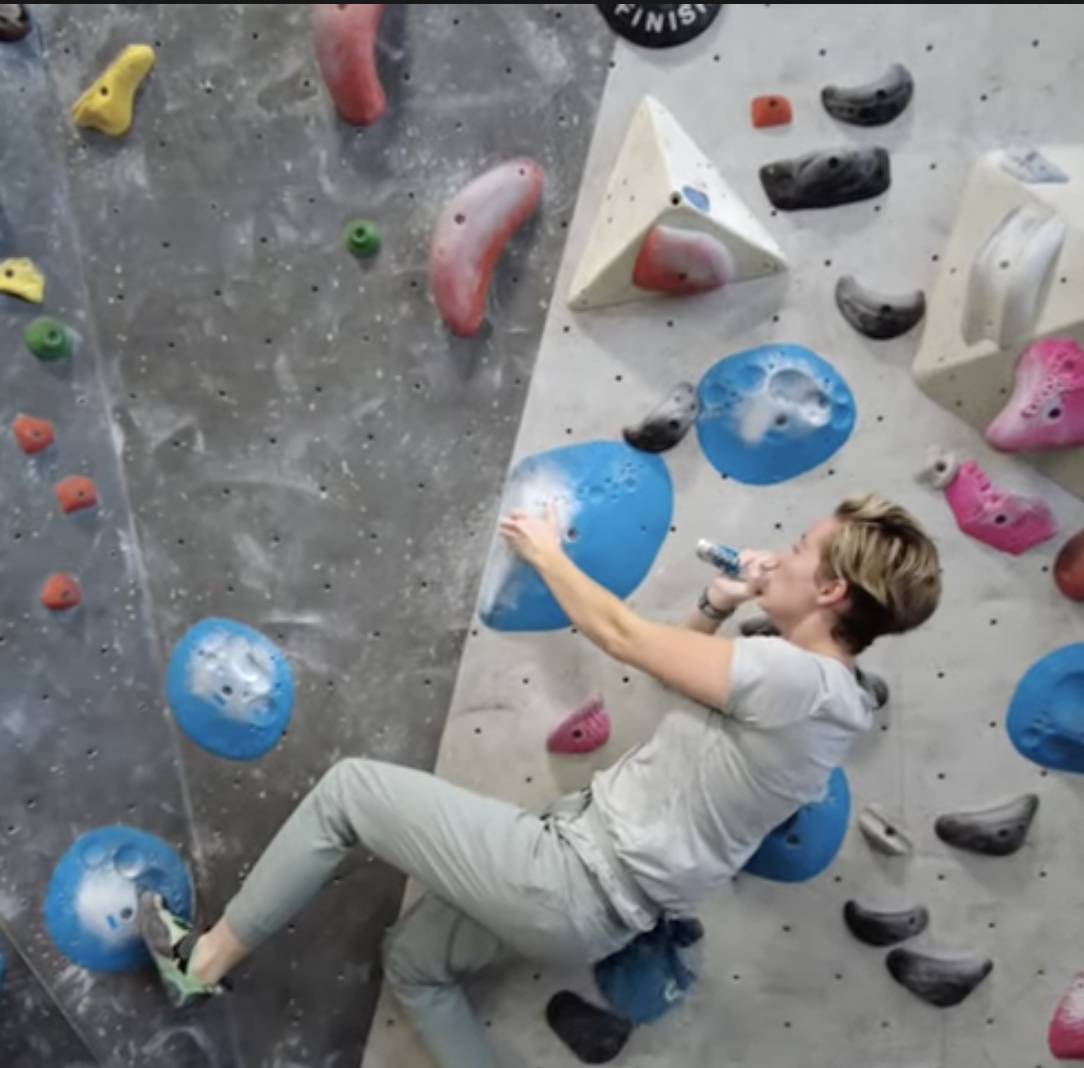One of the first things that coaches recommend for climbers who want to get better at climbing is to climb more. However, they also recommend that you are careful with how often you climb.
Anyone could climb every single day for 5 hours at a time but the likelihood of them getting injured is pretty high compared to those that only climb 3-4 days per week for 2-3 hours each session.
Over the last several weeks, I’ve tested 18 different methods to help your body handle additional climbing. These methods ranged from pre-climbing, during-climbing, and post-climbing.
- 3 of these things actually prevented me from getting pumped and help me get more out of my climbing sessions
- 3 of these things helped me prevent tendon injuries and helped me build up my tendon strength
- 3 methods to decrease muscle soreness
- 3 methods to improve muscle rebuilding
- 2 methods for overall muscle, tendon, and body health
- 2 methods for skin repair
- As well as 2 things that are marketed heavily and are more hype than they are helpful
Prevented Pumping
Getting pumped is when lactic acid build-up happens in your forearms and – lactic acid build-up is a result of not having enough oxygen in your blood. A common way climbers deal with this is by placing their arms down toward the ground so gravity can help circulate new blood from your heart to your forearms and hands. Unfortunately, this is not very effective and climbers tend to be too pumped to keep climbing even after doing this.
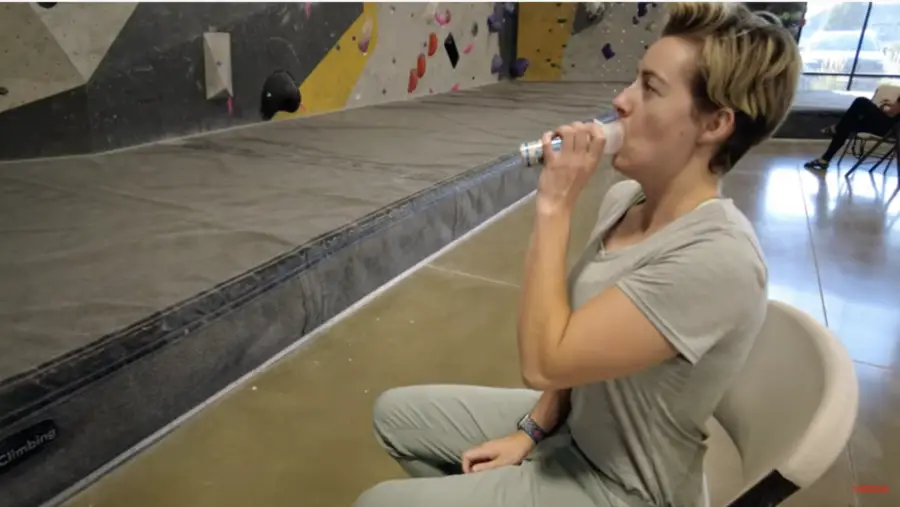
Supplemented Oxygen – Boost Oxygen
This was an interesting experiment for me – I took canisters of Boost Oxygen that are meant to be consumed while exercising and used it while climbing. After each route, I’d inhale a gust of oxygen from the canister. If the route seemed like it was going to be especially powerful or require a lot of energy, I’d also inhale oxygen before getting on the route.
I was happily surprised at what happened during the climbing sessions when I used this method.
Due to adding oxygen into my system, it was easier to get oxygen to my forearms and therefore prevented the lactic acid build-up. It did such a good job, in fact, that I didn’t get pumped while climbing.
During the first few sessions of this experiment, I thought maybe part of it was a placebo. However, after repeating the experiment over the course of multiple sessions, I realized that the oxygen was, in fact, the factor that prevented the pump.
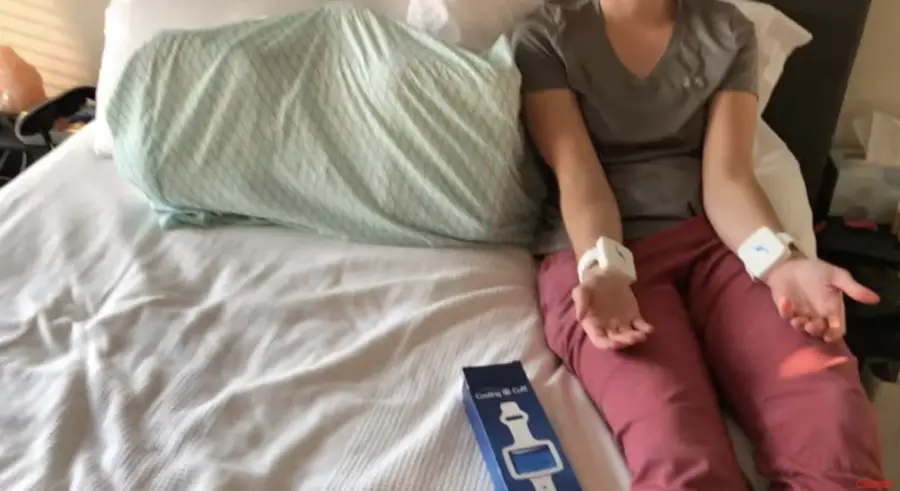
Cooling Cuffs
The cooling cuffs were another interesting experiment. I didn’t really expect much from them when I decided to try them but I was really happily surprised by the results. The cooling cuffs are essentially little icepacks on your wrists. After warming up, I put the cooling cuffs on and climbed with them throughout the session.
The cold icepacks on your wrists send signals to your body to increase blood flow to that area. Because of this, my body was able to get better circulation and thus, decrease lactic acid build-up.
I tested the cooling cuffs on multiple occasions and started realizing that I wasn’t getting pumped when I climbed with them. In fact, I did a hanging challenge while using them and was able to hang four more minutes than usual – not because they gave me magical strength, but because my blood circulation was so much better.
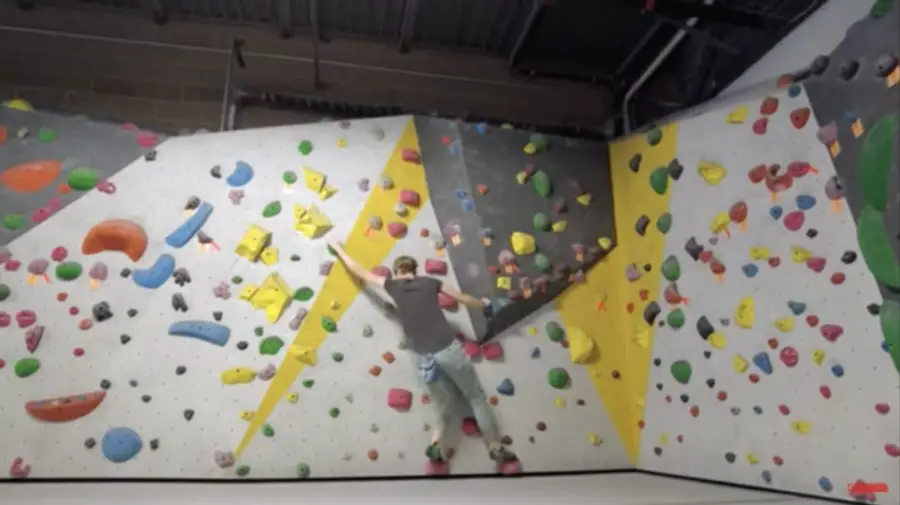
Thorough Warm-up
If you start climbing at your max from the moment you enter the climbing gym, you are going to get a lot of lactic acid build-up due to your body’s veins not being ready for the intense work. To counter this, we need to get your blood pumping to the outer ends of your limbs. That way, even if your arms are up in the air for 100 ft of climbing, you will still be able to get blood flow to your fingers – oxygenated blood flow.
A warm-up should include getting your limbs warmed up and especially your fingers. I typically like to spend quite a bit of time traversing in the kid’s section of a gym to help with this. When there aren’t any kids around, I can go back and forth without getting off the wall for 10 minutes straight while also preparing my hips and hamstrings for flagging and drop knees.
Keep in mind that you will still get pumped while climbing if you are pushing yourself, even if you do an amazing warm-up. However, the warm-up should delay the lactic acid build-up and give you a longer and more beneficial session.
Prevent Tendon Injury
Tendon injuries aren’t unique to climbing but the frequency of hand and elbow tendon injuries seems to be unique climbing as the sport is extremely tough on your finger and elbow tendons. With that being the case, it is essential for climbers to take additional efforts to prevent tendon injuries.
If you watched my mini-series that I did with Eric Horst about tendon care, then you’ll recognize some of these ways to help with climbing recovery.
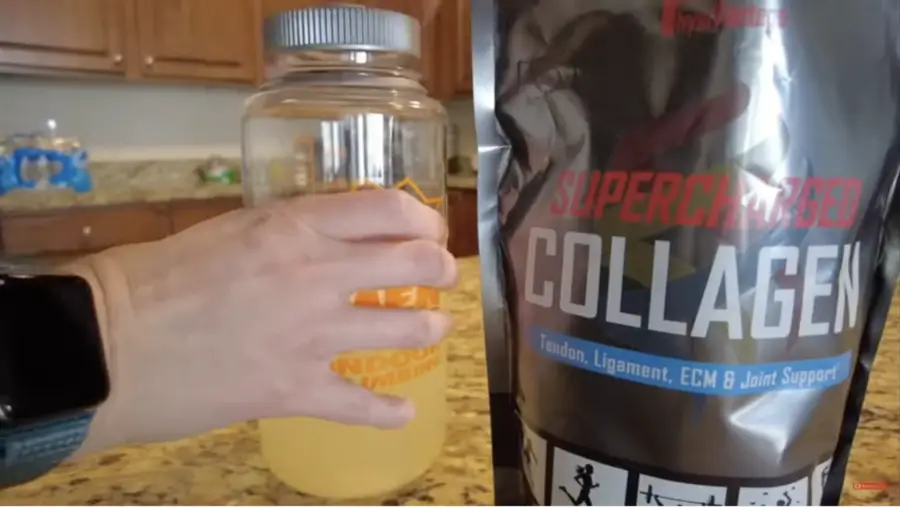
Collagen
Collagen is an important nutrient that makes up your tendons. Studies have shown collagen supplements when taken shortly before climbing, are a great way to help with tendon health and prevent tendon injuries.
For this experiment, I tested two different collagen supplements – PhysiVantage, which is made with a climber specifically in mind, and then I tested a collagen supplement that I got from GNC.
Every day, I drank a serving of collagen 15-20 minutes before climbing. For about 15 sessions, I used PhysiVantages collagen, and then for 15 sessions, I used a Collagen that I got from GNC.
Both brands helped but I did like the PhysiVantage one more. For some reason, my tendons felt more smooth and healthy during the sessions that I used PhysiVantage. This could be the added nutrients that they add as the company has done a lot of research to orchestrate what nutrients were the most important and effective.
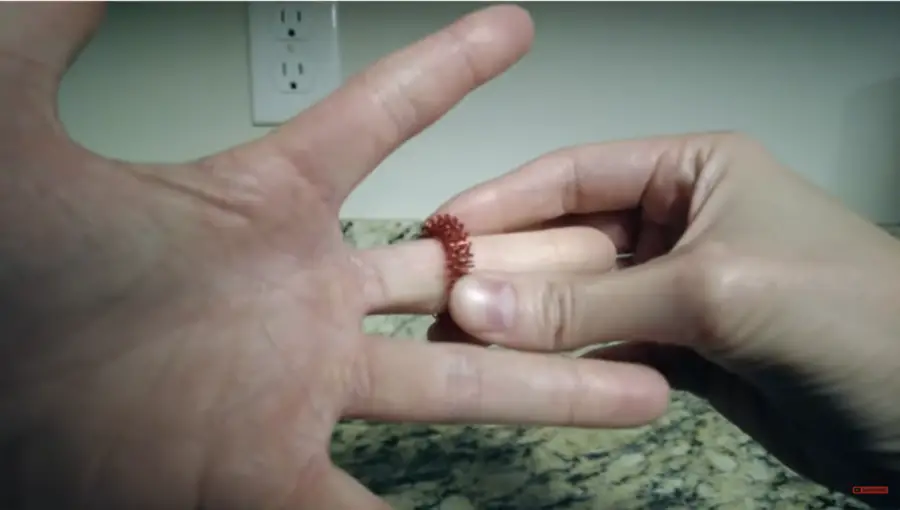
Massage Fingers
Massage is a great way to increase blood flow, which is a primary way for your body to get nutrients to your tendons. There are finger massagers, which are relatively cheap from your local climbing gym or online.
In my experience, however, you should use them before your climbing session and throughout the day – not directly after a climbing session. The reason for this is because your skin is typically sensitive and these are not so easy on your skin.
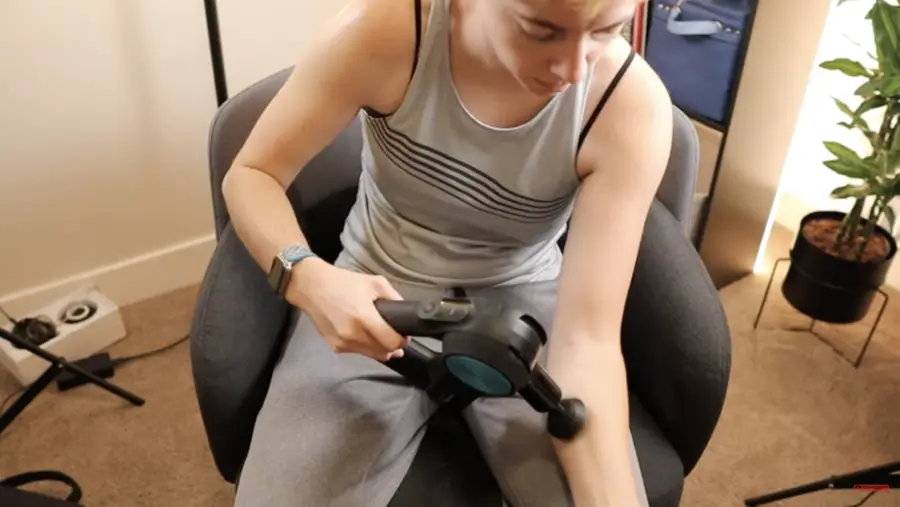
Massage Arms
In addition to massages helping the tendons in your fingers, targeted massaging can also help with elbow and shoulder tendons. Friction massage, which is when you use a tool and scrape along with your muscles and tendons, is a common practice for physical trainers that work with climbers. In fact, Hoopers Beta did an entire video on it and I’d recommend watching it.
For this experiment, however, I used a massage gun. I got this massage gun for Meg last year for Christmas and it was the best gift that I’ve ever gotten her… for me at least.
After doing some research, I learned that massaging out your forearm, then bicep and tricep before massaging the tendon are of your elbow is a great way to get blood flow as well as break up any facia build-up that may put additional strain on your tendons. The same can be done for your knees, but climbers don’t typically have knee issues so I didn’t include that in this list.
Decrease Muscle Soreness
Muscle soreness is a signal that your body isn’t ready for another climbing session. However, there is a way to decrease muscle soreness and to prepare your muscles for another climbing session a little bit faster than if you just let your body do its thing without additional help.
Warm-Cold Showers
As part of a recommended cool down, there have been studying results that suggest that a warm to a cold shower is a great way to cool down and get the blood flowing throughout your body.
The idea here is that you start with a warm or room temperature shower and then transition to a cold shower. This is a little different than a cold shower because you have a moment in the shower before you turn the knob to cold.
I’ve found it to be a little bit easier and more enjoyable than a straight cold shower but the reported benefits are the same as a cold shower.
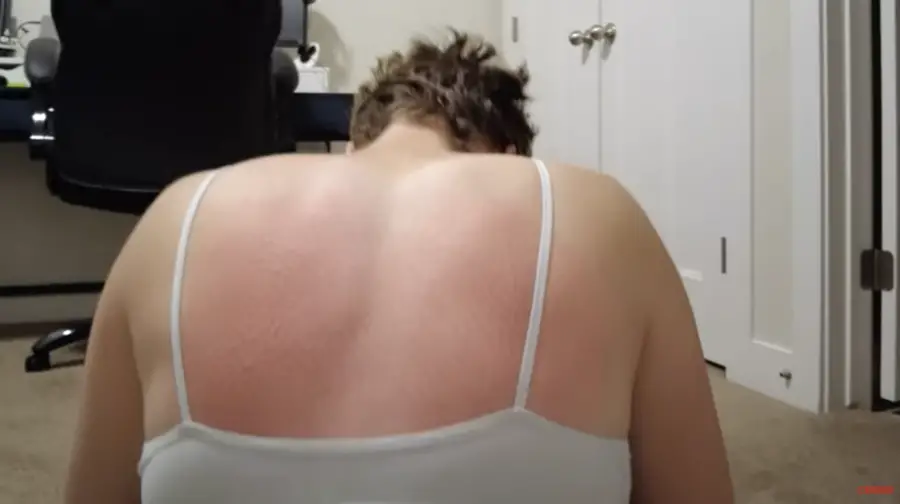
Acupuncture
Acupuncture has been used for a million years to help decrease soreness and pain. The science is mostly related to hitting specific pressure points and when the body realizes that it is not in danger and decreases the sensitivity to those nerves.
Typically acupuncture is really expensive and requires a professional to do so. Luckily I found this bed of nails, which is supposed to be like a mat with thousands of hypoallergenic acupuncture needles. The difference is that they don’t penetrate your skin and all you have to do is lay down on it for a similar effect.
My first time trying it hurt a lot but after a few days of doing it nightly, I actually found it quite comforting and it did help with my muscle soreness. I’m not sure if this is ideal but eventually, I learned if I put the mat on the bed and did them laying down on the bed that I got to my lower back a lot easier and have better coverage of the needles. However, it didn’t seem like it was as painful so maybe it’s not as effective as placing it on a hard surface?
That being said, it was plenty effective for me. On one occasion my psoas was so sore that when I stood up or laid down flat on my back, I’d get sick to my stomach from pain. I spent the entire day taking Ibuprofen and Tylenol in addition to stretching but I didn’t seem to feel any relief. Finally, I decided to lay down on the bed of nails. That was the moment that I realize the bed of nails is really beneficial for me – I actually started feeling relief.
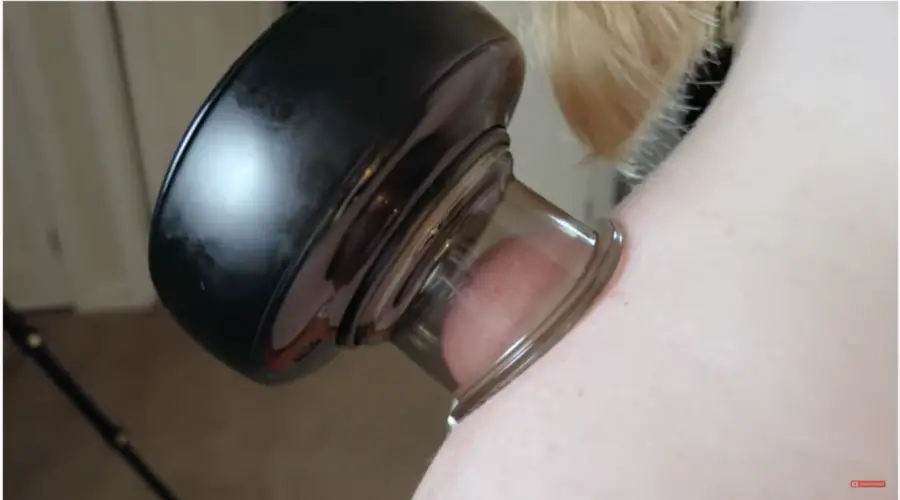
Cupping
Cupping has been known to draw stagnant fluids toward the surface, assisting with detoxification, and it brings in fresh nutrient-rich blood. Cupping provides a gentle sustained stretch for loosening tight muscles and connective tissue adhesions. It also clears “heat” or inflammation, according to many studies.
I was actually sent a cupping mechanism to test out and after trying it a few times, I decided to share it with you guys as it did seem to help me recover a lot faster and with less effort on my part.
Typically, when you go to a professional, they will either use the glass cupping mechanisms that use fire or a plastic cup with a pump that needs to be pumped just enough and then left there for a period of time
This pump machine does it electronically and depending on the mode you use, it will suck, then decompress, then suck again over and over again for a nice massage. This type of cupping would be very challenging to mimic with the flames or plastic pumps. Additionally, you can use it more traditionally where you pick how much pressure you want and it stays tight for the period of cupping.
It also has different strengths so you can test the cupping on a spot with light cupping and work your way up to a higher setting.
**Get $25 Off Your Cupping Device Purchase With This Coupon Code: SendEdition **
Increase Muscle Repair
BCAAs
BCAAs are the essential amino acids that comprise around 35% of your body’s muscle protein. They’re typically found in food and supplements and help your muscles grow and recover. You can get BCAAs from just about any grocery store or supplement store and there are a few climbing-specific brands that make them too.
Essentially, they are an amazing way to help your muscles recover. Every time I used BCAAs, I find myself recovering faster than if I just went to bed after climbing.
Even with the benefits that I’ve felt and noticed, however, I tend to struggle consistently using them. I’ve tried 3 brands and all are soo sweet, probably because of the amino acids, that I struggle to get them down.
To drink BCAA’s I’ve resorted to making a drinking game out of taking my dog out on a short walk. I’d take the small bottle of BCAAs with me on a short walk with my dog and every time she squats to pee, I’d take a swig. Sometimes, I felt like she took a squat a little too often. But at least it got me through the drink.
That being said, I know a lot of people that enjoy the flavors and recommend different candy flavors. Maybe someday I’ll grow to enjoy them.

Protein Drinks/Smoothies
One of the cheapest ways to recover you muscles is by drinking protein before going to bed. A lot of people swear by Whey protein but I’m allergic to protein and there have been multiple studies to support the use of drinking Whey protein. However, I’m allergic to whey and can’t drink it.
I have tried a couple of vegan proteins and found a couple that I really like. However, this one from Nutrilite is probably my favorite. It has a bunch of added amino acids that also help with connective tissue, not just muscles, so I’d recommend it.
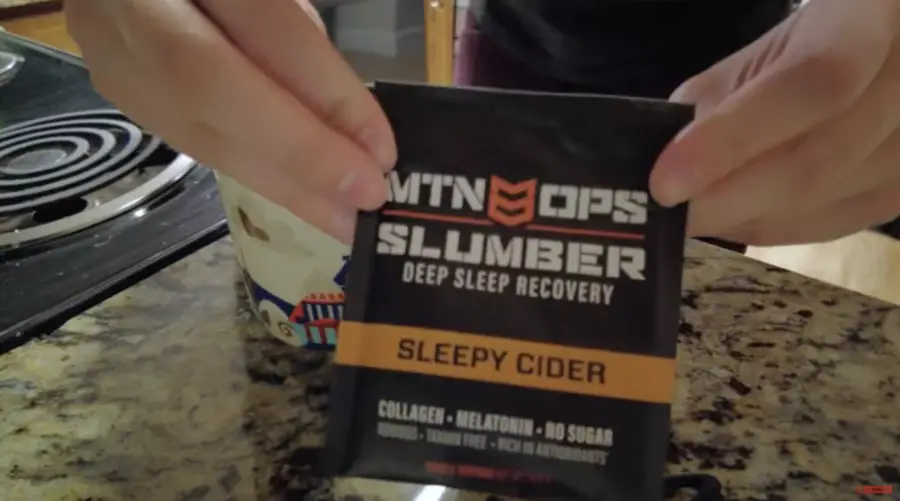
Recovery Tea
One thing that I found while looking for ways to recover muscles was getting some collagen in your system right before going to bed. When collagen is used shortly before climbing, it is easier to get to your tendons. However, if you aren’t putting a load on your tendons and are doing something like sleeping, collagen has been shown to help bring proteins to your muscles and recover your muscles.
I actually found a tea that combines melatonin with collagen for better muscle while you sleep. I typically only used it when I was feeling particularly sore but I have noticed that I seem to recover faster when I use it. Plus, when I use it, I tend to sleep better because of the melatonin.
Overall Health – Body, Muscles, and Tendons
A lot of the things in this article target specific parts of your body like tendons and muscles, however, your entire body is part of climbing and there are two things I’ve found to help with your overall health and body.

Water
This article wouldn’t be complete without including this easy but completely necessary means of recovery. Water flushes toxins out of the body, transports nutrients into the cells, and helps regulate body temperature and pH balance. Water also helps with muscle soreness and tension.
Drinking adequate water during your climbing session isn’t enough though. You need to be well hydrated before and after your climbing session to get the most benefits out of it. The water you drink during your session will have little consequence on your body’s ability to do its job. This is why you need to make sure that you’re hydrated before your session.
You should be drinking 67 ounces per 100 lbs that you weigh. So if you wat 140lbs, you would multiply 140 by 0.67, which provides you with the answer of 94 ounces per day.
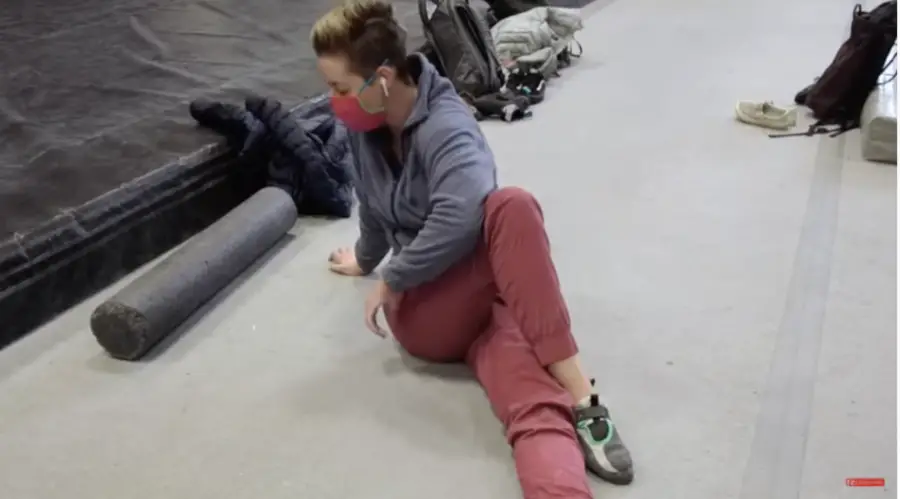
Stretching
Something that I tend to struggle with but always notice a difference with my overall wellbeing is stretching. Stretching has been a proven way to decrease muscle soreness and stiffness, improve posture and help reduce stress. In addition, it has been proven to help prevent injuries. All of which, are essential to your climbing abilities and basic wellness.
There are a few schools of thought when it comes to what type of stretching such as dynamic vs static stretching. However, as long as you are doing either of these safely, I’m under the impression that either would help.
I tend to do more dynamic stretching before physical activity and then more static stretches after a climbing session while my muscles are still warm. In fact, I tend to notice a performance difference on sessions that I stretch before. The same can be said for a decrease in muscle stiffness when I stretch after climbing compared to just going home and sitting on the couch for an hour while I recoup my energy.
Skin recovery
Oftentimes, especially for beginner climbers, skin feels more burdensome than muscles and tendons. However, even advanced climbers recognize that skin can be a limiting factor in how much you can climb.
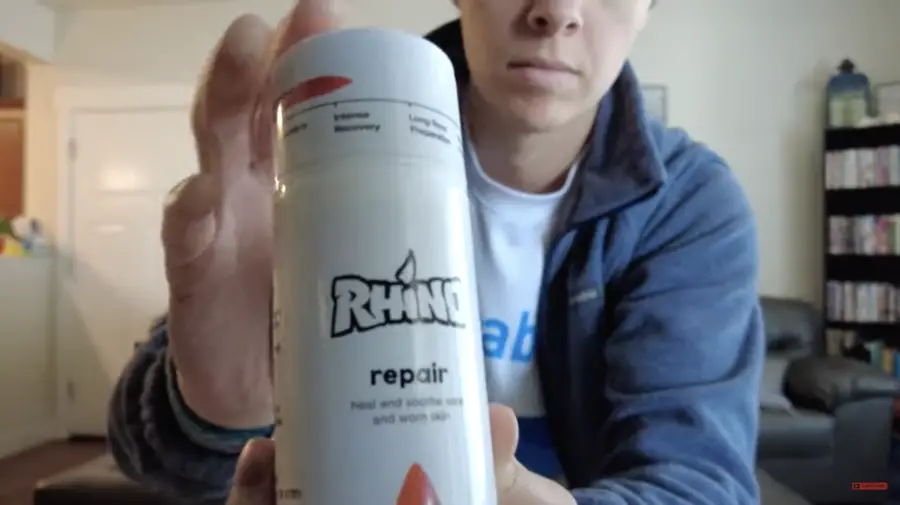
Skin Cream at Night
Over the last couple of months, I’ve been testing different skincare regimens to improve skin recovery. My very favorite skin repair has been from Rhino Skin Care as well as their performance cream.
The Performance cream is made to increase the durability of your skin and is recommended to be used 3-4 times per week depending on how often you climb. Since I was climbing daily, I was using it closer to five times per week.
The Repair cream is made to increase the speed of your skin recovery. In comparison to the performance, your skin will be more elastic, which is key to healing. The Repair is typically what I’ll use if I get a tear or cut on my hand – especially after climbing outdoors as that seems to be where I get the most random miniature cuts on my hand.
Skin Cream Before Climbing
If you know you’re going to be doing some skin-crazy climbing then it is a good idea to invest in something like Climb Skin that temporarily increases your skin durability and tackiness. When I use Climb Skin, it always feels like I’m spiderman and can stick to a lot more. Plus, my hands do seem to handle a bit more ruggedness than if I wasn’t using it.
One thing with this skincare cream is that you need to apply it about 1-2 hours before climbing. Unfortunately for me, I tend to use the restroom right before I climb and I wash a lot of it off when I wash my hands. Luckily, I have noticed that as long as it had an hour or so to be absorbed into my hands, it tends to still have the benefits as if I didn’t wash my hands.
More Hype than Help
Sometimes, the marketing of different products seems so impressive that you may think you need the product for recovering from climbing. However, I’ve noticed that some of these products have a little more hype than they are helpful. These are two of those kinds of products, in my opinion.
Muscle Soap
I saw this muscle recovery soap at the grocery store and decided to try it. According to the packaging, it can be used for a bubble bath or just use as a body wash. Then, when you use it, the essential oils in it are supposed to help with muscle recovery sustenance.
Though I enjoyed the bubble bath when I tried it, I had to keep my hands out of the water to prevent pruning my hands and making my skin too soft for climbing the next day, which is common for climbers. Because of this, it might not be ideal for climbers.
Additionally, I’ve used Epsom salts with muscle recovery essential oils that seemed to make a bigger difference than the bubble bath
I ended up using this soap for a month as a body wash and have concluded that I like the smell but I didn’t see a noticeable effect on my sore muscles. It turned out to be more like an expensive body wash.
Additionally, it seemed like when I rinsed off the soap, most of the essential oils were washed away as well.
Instead of a body wash, consider using a muscle recovery lotion instead. That way the essential oils don’t get washed off.

Ice Fingers
Icing your fingers is a way that you can get blood flow to your finger tendons, which can help you recover as long as you have the nutrients in your system for your blood to carry to your tendons.
There seems to be a lot of hype surrounding icing fingers and lots of this is probably from companies teaming up with climbers to advertise the product that looks like a little ice koozie for your fingers.
The reason I think this product is more hype than helpful is that you can get the exact same outcome by putting your fingers in a bowl of ice water for a couple of minutes. The difference? A bowl of ice water is typically free compared to the $10 per finger price tag on the ice finger koozie.
Knowing how to recover so you can climb is important to prevent injuries and enable you to climb more often.
More About Training for Climbing:
- How To Climb More Often Without Getting Injured | Tried And Tested Methods For Recovery
- Lower Body Mobility And Flexibility Challenge
- Neglected Techniques Necessary For V4-V5 Progression
- 17 Footwork Drills For Climbing
- Mental Training For Climbing
- How Often And Hard Should You Climb To Get Gains?
- When Should You Start Hangboarding For Boulder’s
- Is Bouldering When Sore Bad?
- The Top 22 Climbing Techniques And Skills And How To Do Them
- 23 Tips For Climbing Slabs
- When To Flag In Climbing And How-To-Do It (With Videos)
- How To Learn Climbing Technique For Beginners
- What Should You Record In A Climbing Journal?
- Climbing Endurance: Muscle, Skin And Mental Training
- How To Deal With Fear Of Falling
- How Many Days Should You Climb Per Week?
- 5-10 Minute Warm-Up For Climbing
- What Is A Dyno And How To Do It
- What Is A Gaston In Climbing? Powerful Moves For Beginners
- Can Foam Rolling Improve Rock Climbing Performance?
- 7 Things Climbers Should Do On Rest Days For Better Performance
- When Do You Need A Rest Day?
- How To Climb Your Best – Pros And Cons Of Rest Days
- Static Vs Dynamic Climbing Movement: Pros And Cons
- 5 Habits For Healthy Climbing That You Haven’t Thought Of
- 5 Things To Improve Climbing Performance And Sustainability
- 10 Minute Workout Routines For Post Climbing Sessions
- How To Use Climbing Holds: Techniques For Improved Climbing
- A Guide For Climbers: Bouldering Drills 101
- 12 Easy Workouts To Increase Hand And Grip Strength For Climbers
- What Are Undercling Climbing Holds And Why Climbers Love/Hate Them
- What Is A Crimp In Rock Climbing And How To Train For Them
- 7 Common Mistakes in Rock Climbing For Beginners

